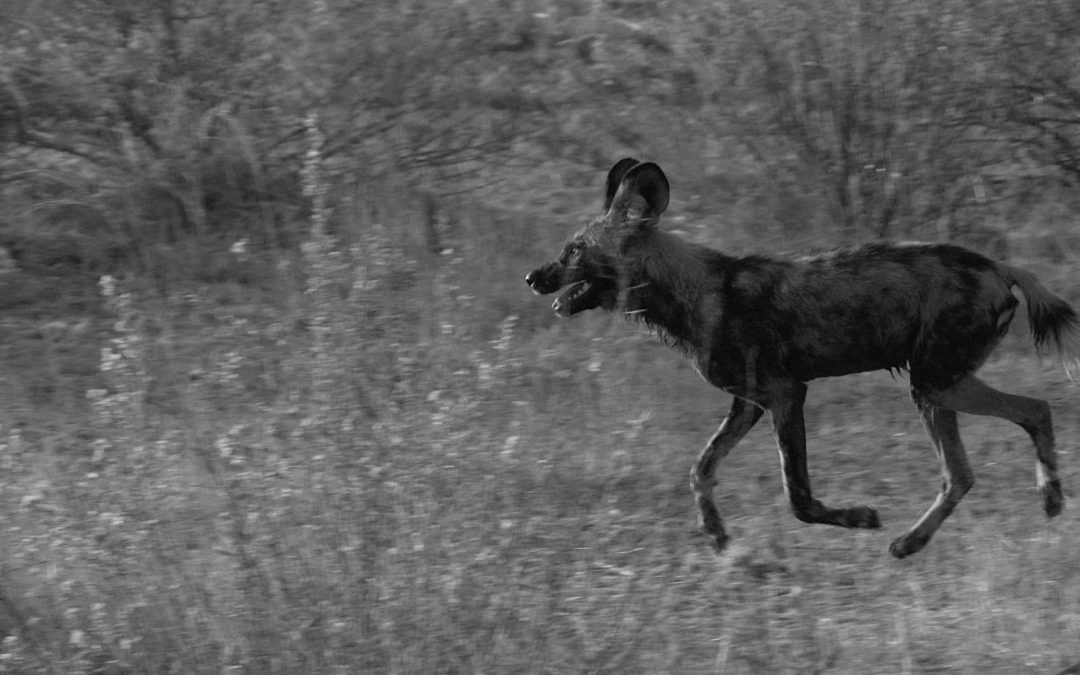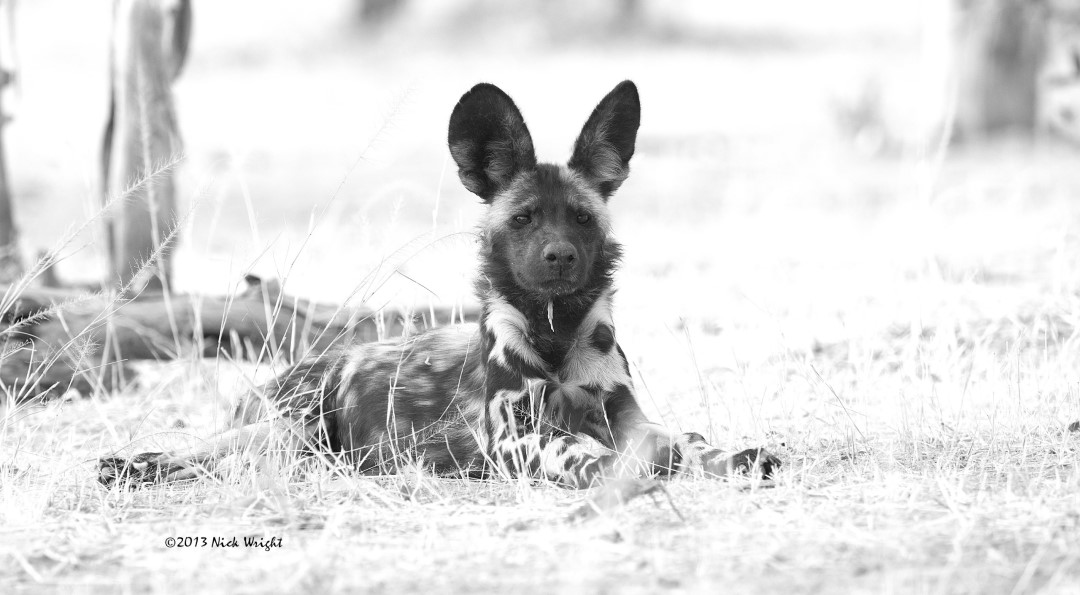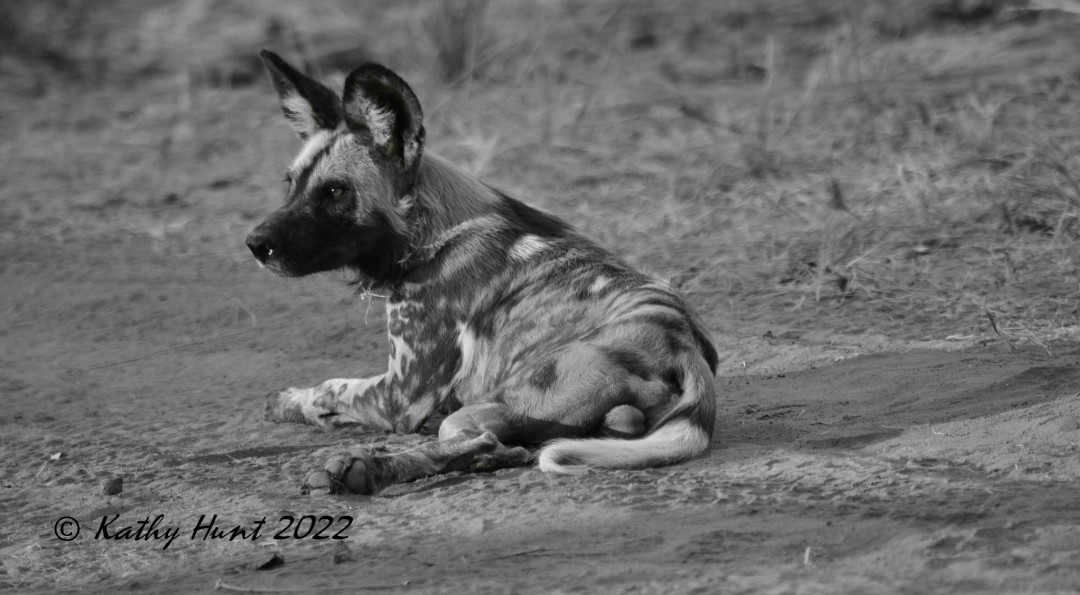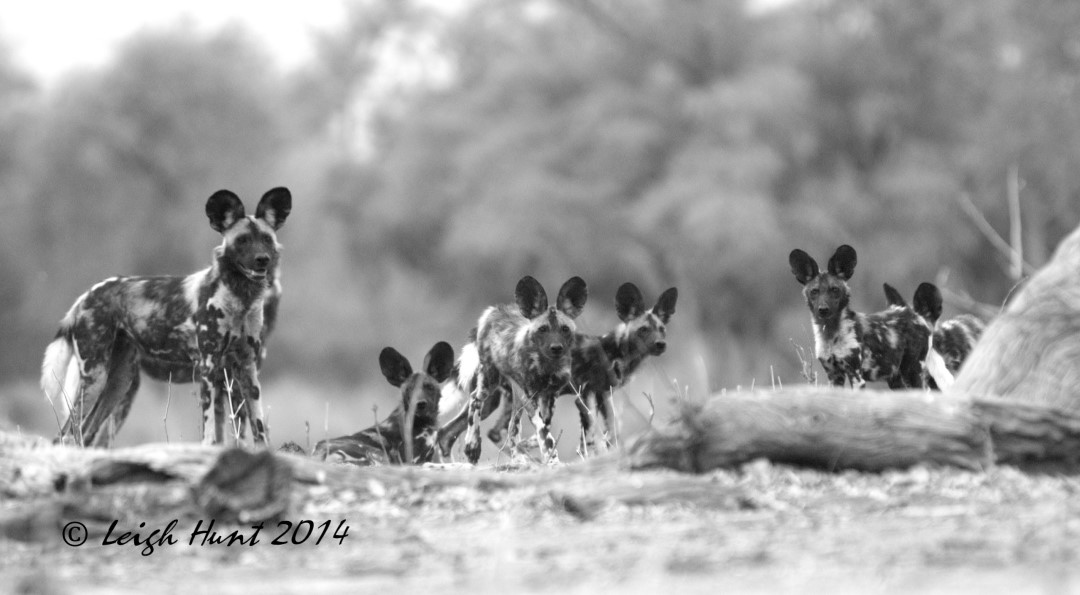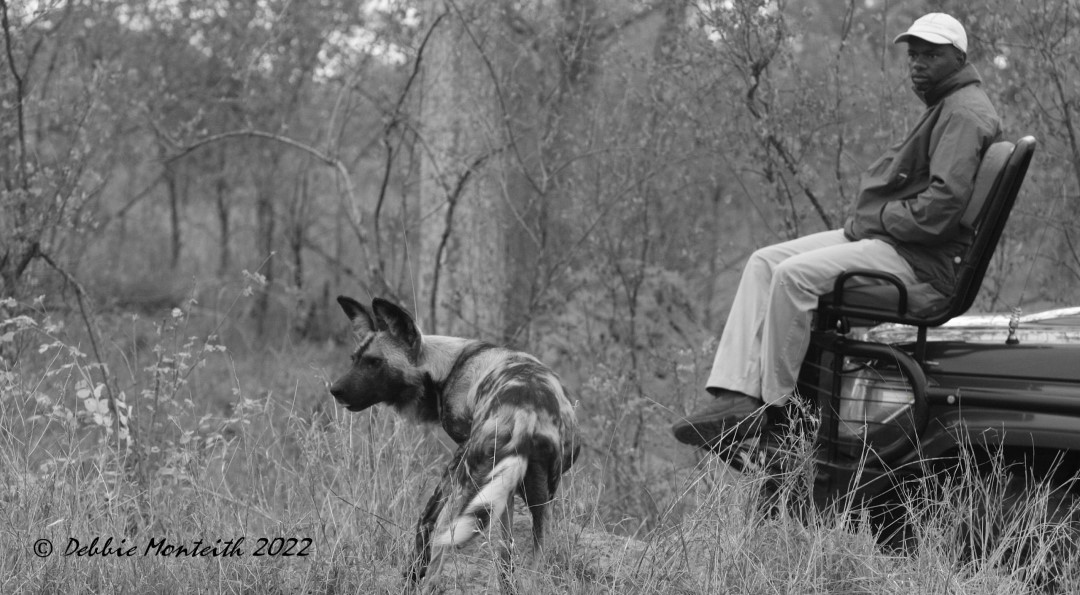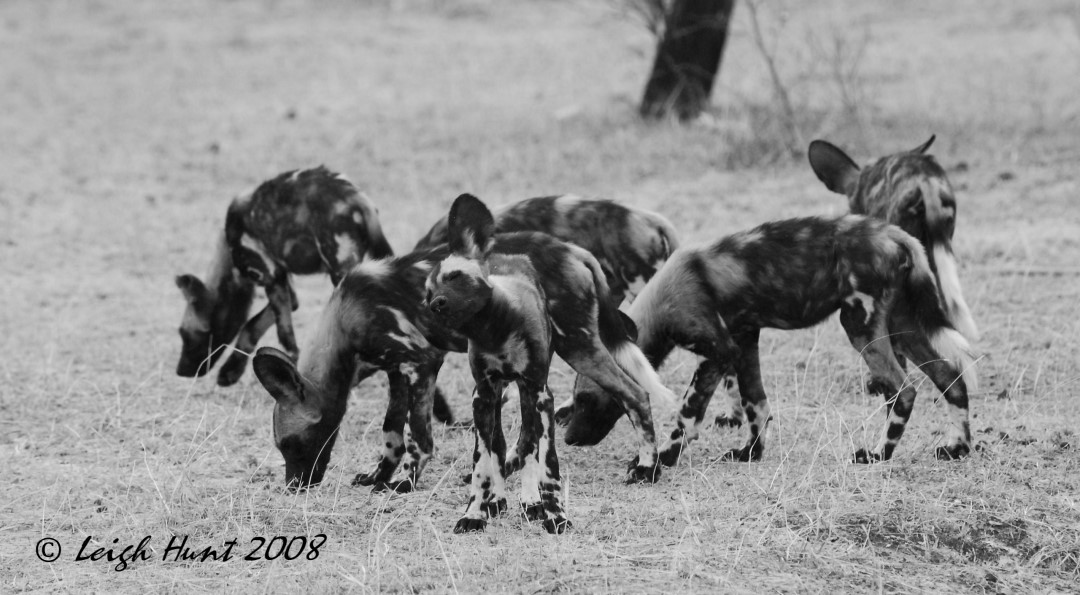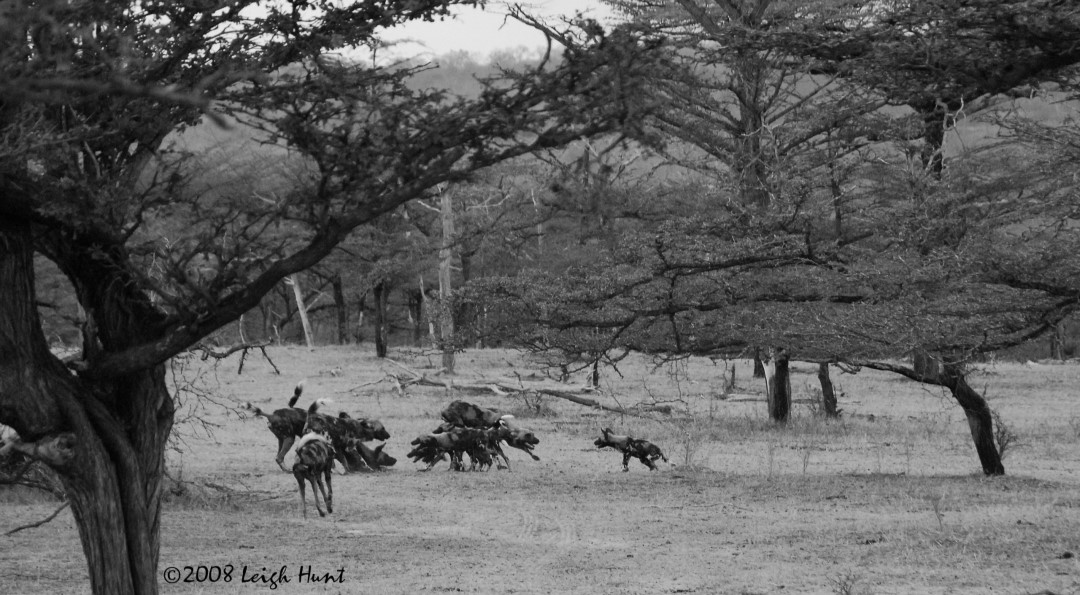Wild about Wild Dogs? Passionate about Painted Wolves? From a creature once persecuted and with a price on its head to one high on many safari-goer’s must see list the African Wild Dog (Lycaon pictus) is an African icon. Despite being one of the most effective predators with a caring social structure these “dogs” are seriously endangered, by habitat loss, disease, and human conflict, with less than 7000 individuals left in the wild and less than 2000 reproductive individuals. 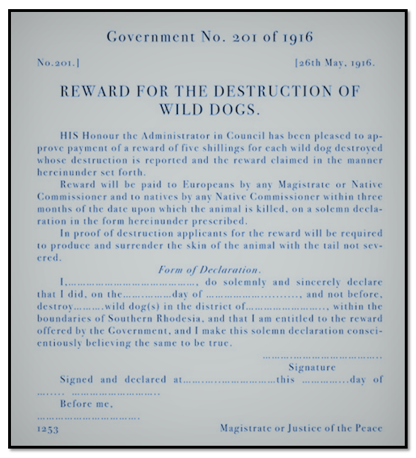 Almost since our first safari (1996) we have had astounding encounters with these icons of the bush. Here we present wild dogs in black & white – the facts and images from our travels together with some from our clients. Give us a call now so Safari Co put you in the right place for your encounter with African Wild Dogs. The facts:
Almost since our first safari (1996) we have had astounding encounters with these icons of the bush. Here we present wild dogs in black & white – the facts and images from our travels together with some from our clients. Give us a call now so Safari Co put you in the right place for your encounter with African Wild Dogs. The facts:
 Almost since our first safari (1996) we have had astounding encounters with these icons of the bush. Here we present wild dogs in black & white – the facts and images from our travels together with some from our clients. Give us a call now so Safari Co put you in the right place for your encounter with African Wild Dogs. The facts:
Almost since our first safari (1996) we have had astounding encounters with these icons of the bush. Here we present wild dogs in black & white – the facts and images from our travels together with some from our clients. Give us a call now so Safari Co put you in the right place for your encounter with African Wild Dogs. The facts:
- Unique Appearance: Each African wild dog has a unique coat pattern, making them easily identifiable. The species stands 60 to 75 cm (24 to 30 in) at the shoulders, measures 71 to 112 cm (28 to 44 in) in head-and-body length and has a tail length of 29 to 41 cm (11 to 16 in). Adults weigh between 18 and 36 kg (40 and 79 lb).
- Exceptional Hunters: They have a high hunting success rate, around 80%. This is normally attributed to their teamwork and stamina but is far more nuanced. Here’s a more detailed breakdown:
- Visual Cues: African wild dogs are highly visual hunters, relying on their sight to spot potential prey. If the prey doesn’t run the dogs will probably not hunt the animal.
- Dawn and Dusk: They typically hunt during these times because the light is optimal for their vision and prey animals are often moving to or from feeding grounds but dogs are opportunistic and can hunt at any time during daylight.
- Pack Dynamics: The pack’s social structure and the presence of young pups influence hunting frequency and strategy. The need to feed the young can increase the frequency of hunting.
- Prey Availability: While they prefer certain prey animals like impala and Thomson’s gazelle, they will adapt their hunting strategy to what is available.
- Energy Expenditure: Hunting requires significant energy, and they are less likely to pursue a hunt if the prey is too difficult to catch or if the chase becomes too risky.
- Scavenging: While primarily hunters, they may scavenge when the opportunity arises, especially if a kill is easily accessible and the risk of predation is low. We have witnessed a dog pack scavenging leftovers from a bull buffalo carcass that had been stripped by hyena the previous night.
With thanks to Nick Dyer and Peter Bilston for the use of the Wild Dog bounty poster from their fabulous book “Painted Wolves – A Wild Dog’s Life“. The Painted Wolf Foundation aims to secure the future for the Painted Wolf. With thanks to our clients for the use of their wild dog images. We chose a limited selection and could have published many more.

